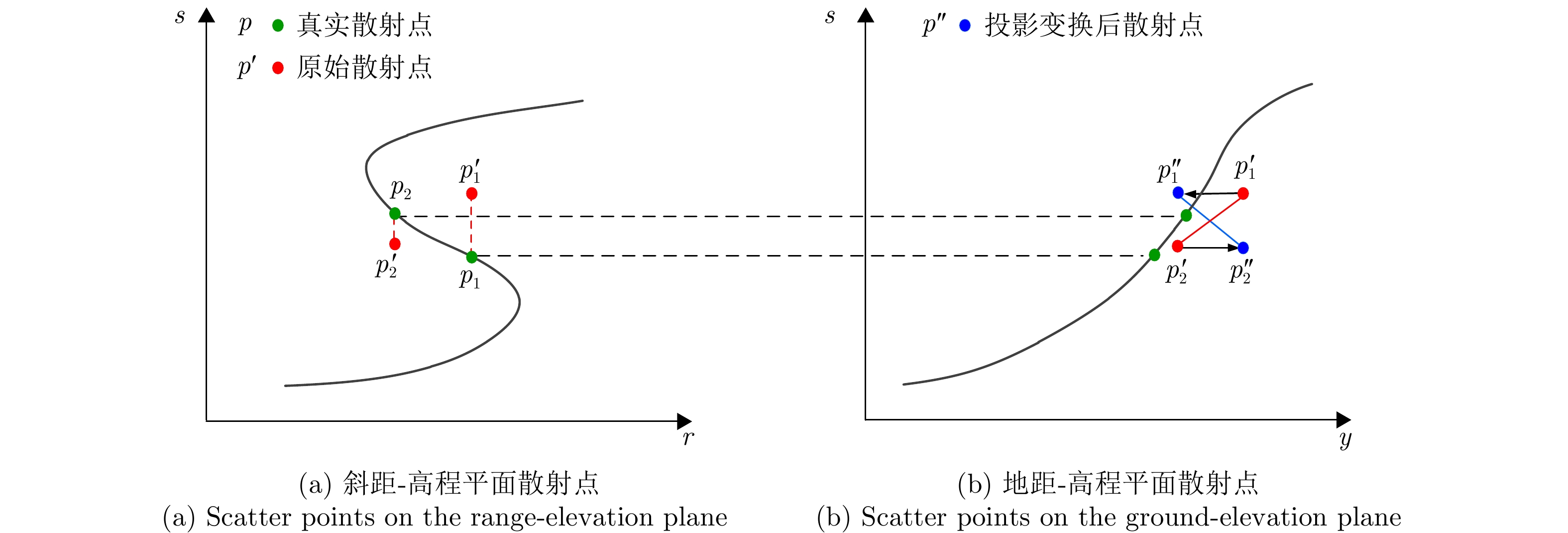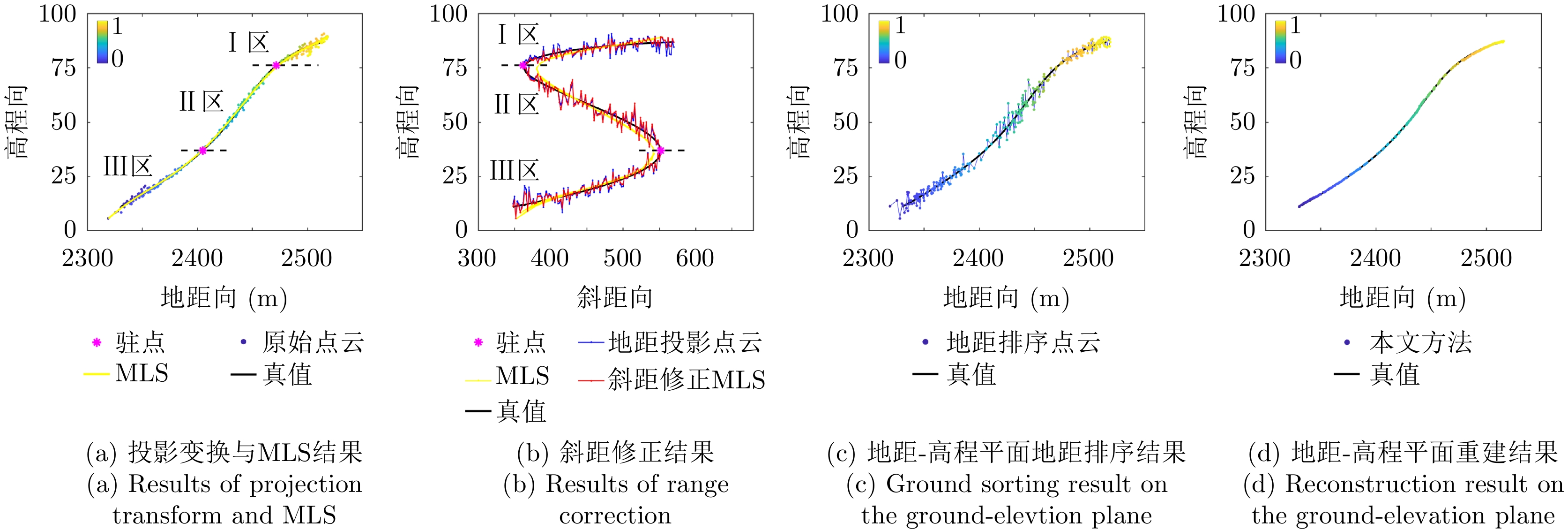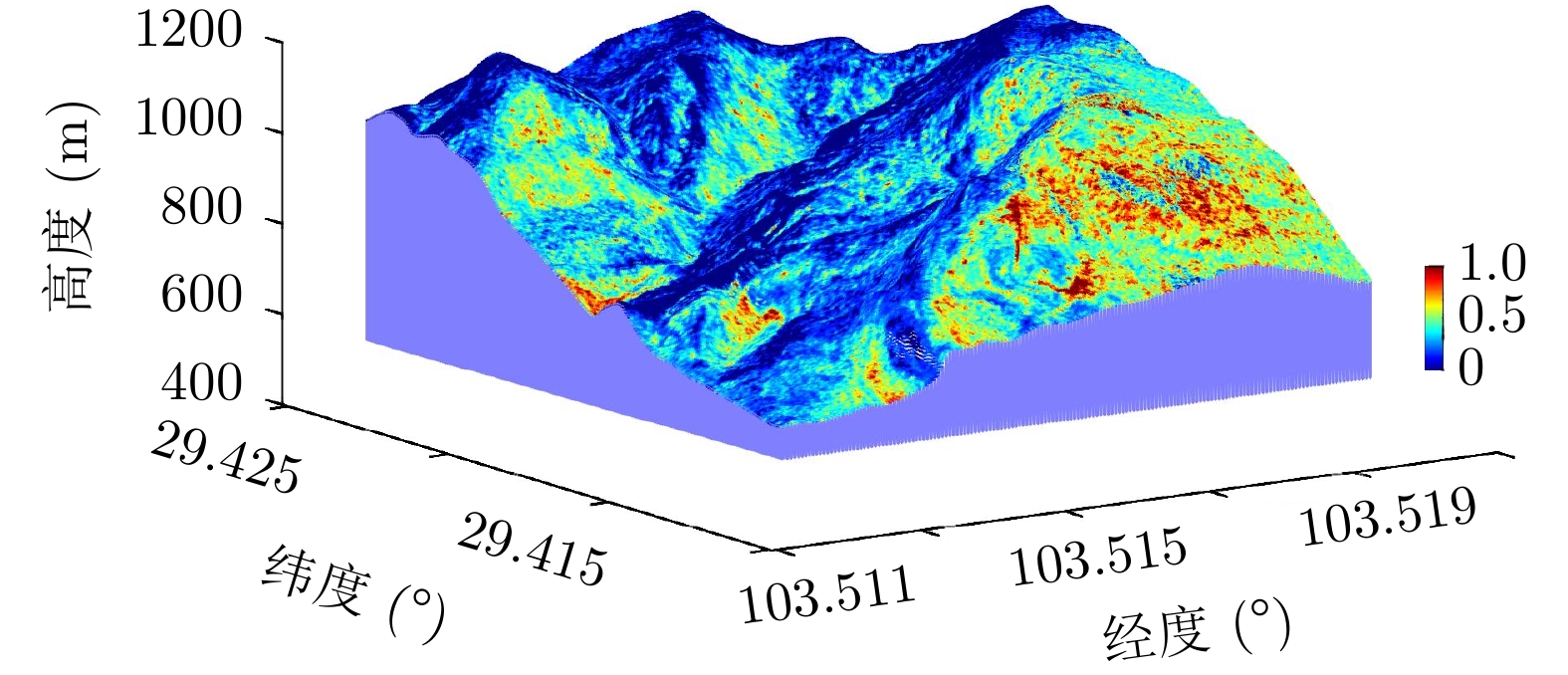| [1] |
KÖNINGER A and BARTEL S. 3D-GIS for urban purposes[J]. Geoinformatica, 1998, 2(1): 79–103. doi: 10.1023/A:1009797106866 |
| [2] |
WANG Yuanyuan and ZHU Xiaoxiang. Automatic feature-based geometric fusion of Multiview TomoSAR point clouds in urban area[J]. IEEE Journal of Selected Topics in Applied Earth Observations and Remote Sensing, 2015, 8(3): 953–965. doi: 10.1109/JSTARS.2014.2361430 |
| [3] |
MINH D H T, LE TOAN T, ROCCA F, et al. SAR tomography for the retrieval of forest biomass and height: Cross-validation at two tropical forest sites in French Guiana[J]. Remote Sensing of Environment, 2016, 175: 138–147. doi: 10.1016/j.rse.2015.12.037 |
| [4] |
EL IDRISSI ESSEBTEY S, VILLARD L, BORDERIES P, et al. Long-term trends of P-band temporal decorrelation over a tropical dense forest-experimental results for the BIOMASS mission[J]. IEEE Transactions on Geoscience and Remote Sensing, 2022, 60: 5102415. doi: 10.1109/TGRS.2021.3082395 |
| [5] |
LI Mofan, XIANG Yin, CHEN Xinliang, et al. Altitude ambiguity suppression method based on dual-frequency interfering and multi-frequency averaging for sparse baseline TomoSAR[J]. Electronics Letters, 2019, 55(22): 1194–1196. doi: 10.1049/el.2019.2198 |
| [6] |
GUO Jiao, LI Zhenfang, and BAO Zheng. Using multibaseline InSAR to recover layovered terrain considering wideband array problem[J]. IEEE Geoscience and Remote Sensing Letters, 2008, 5(4): 583–587. doi: 10.1109/LGRS.2008.2000623 |
| [7] |
ZHU Xiaoxiang and SHAHZAD M. Facade reconstruction using Multiview spaceborne TomoSAR point clouds[J]. IEEE Transactions on Geoscience and Remote Sensing, 2014, 52(6): 3541–3552. doi: 10.1109/TGRS.2013.2273619 |
| [8] |
ZHANG Fubo, LIANG Xingdong, WU Yirong, et al. 3D surface reconstruction of layover areas in continuous terrain for multi-baseline SAR interferometry using a curve model[J]. International Journal of Remote Sensing, 2015, 36(8): 2093–2112. doi: 10.1080/01431161.2015.1030042 |
| [9] |
张福博. 阵列干涉SAR三维重建信号处理技术研究[D]. [博士论文], 中国科学院大学, 2015.
ZHANG Fubo. Research on signal processing of 3-D reconstruction in linear array synthetic aperture radar interferometry[D]. [Ph. D. dissertation], University of Chinese Academy of Sciences, 2015.
|
| [10] |
LI Xiaowan, ZHANG Fubo, LI Yanlei, et al. An elevation ambiguity resolution method based on segmentation and reorganization of TomoSAR point cloud in 3D mountain reconstruction[J]. Remote Sensing, 2021, 13(24): 5118. doi: 10.3390/rs13245118 |
| [11] |
FISCHLER M A and BOLLES R C. Random sample consensus: A paradigm for model fitting with applications to image analysis and automated cartography[J]. Communications of the ACM, 1981, 24(6): 381–395. doi: 10.1145/358669.358692 |
| [12] |
D’HONDT O, GUILLASO S, and HELLWICH O. Geometric primitive extraction for 3D reconstruction of urban areas from tomographic SAR data[C]. Joint Urban Remote Sensing Event 2013, Sao Paulo, Brazil, 2013: 206–209.
|
| [13] |
SHAHZAD M and ZHU Xiaoxiang. Robust reconstruction of building facades for large areas using spaceborne TomoSAR point clouds[J]. IEEE Transactions on Geoscience and Remote Sensing, 2015, 53(2): 752–769. doi: 10.1109/TGRS.2014.2327391 |
| [14] |
SHAHZAD M and ZHU Xiaoxiang. Reconstructing 2-D/3-D building shapes from Spaceborne tomographic synthetic aperture radar data[J]. The International Archives of the Photogrammetry, Remote Sensing and Spatial Information Sciences, 2014, XL-3: 313–320. doi: 10.5194/isprsarchives-XL-3-313-2014 |
| [15] |
ZHOU Siyan, LI Yanlei, ZHANG Fubo, et al. Automatic regularization of TomoSAR point clouds for buildings using neural networks[J]. Sensors, 2019, 19(17): 3748. doi: 10.3390/s19173748 |
| [16] |
AVRON H, SHARF A, GREIF C, et al. ℓ 1-sparse reconstruction of sharp point set surfaces[J]. ACM Transactions on Graphics, 2010, 29(5): 135. doi: 10.1145/1857907.1857911 |
| [17] |
FU Yan and ZHAI Jinlei. Research on scattered points cloud denoising algorithm[C]. 2015 IEEE International Conference on Signal Processing, Communications and Computing (ICSPCC), Ningbo, China, 2015: 1–5.
|
| [18] |
GU Xiaoying, LIU Yongshan, and WU Qiong. A filtering algorithm for scattered point cloud based on curvature features classification[J]. Journal of Information and Computational Science, 2015, 12(2): 525–532. doi: 10.12733/jics20105244 |
| [19] |
DIGNE J and DE FRANCHIS C. The bilateral filter for point clouds[J]. Image Processing on Line, 2017, 7: 278–287. doi: 10.5201/ipol.2017.179 |
| [20] |
ZENG Jin, CHEUNG G, NG M, et al. 3D point cloud denoising using graph Laplacian regularization of a low dimensional manifold model[J]. IEEE Transactions on Image Processing, 2020, 29: 3474–3489. doi: 10.1109/TIP.2019.2961429 |
| [21] |
GERNHARDT S, ADAM N, EINEDER M, et al. Potential of very high resolution SAR for persistent scatterer interferometry in urban areas[J]. Annals of GIS, 2010, 16(2): 103–111. doi: 10.1080/19475683.2010.492126 |
| [22] |
NEALEN A. An as-short-as-possible introduction to the least squares, weighted least squares and moving least squares methods for scattered data approximation and interpolation[R/OL]. http://www.nealen.com/projects, 2004.
|
| [23] |
LEVIN D. The approximation power of moving least-squares[J]. Mathematics of Computation, 1998, 67(224): 1517–1531. doi: 10.1090/S0025-5718-98-00974-0 |
| [24] |
JIAO Zekun, DING Chibiao, QIU Xiaolan, et al. Urban 3D imaging using airborne TomoSAR: Contextual information-based approach in the statistical way[J]. ISPRS Journal of Photogrammetry and Remote Sensing, 2020, 170: 127–141. doi: 10.1016/j.isprsjprs.2020.10.013 |
| [25] |
BUDILLON A, EVANGELISTA A, and SCHIRINZI G. Three-dimensional SAR focusing from multipass signals using compressive sampling[J]. IEEE Transactions on Geoscience and Remote Sensing, 2011, 49(1): 488–499. doi: 10.1109/TGRS.2010.2054099 |
| [26] |
孙婷. 基于移动最小二乘近似权函数的选取及其应用[D]. [硕士论文], 苏州大学, 2010.
SUN Ting. Selection and application of weight function based on MLS[D]. [Master dissertation], Soochow University, 2010.
|
| [27] |
ZENG Qinghong and LU Detang. Curve and surface fitting based on moving least-squares methods[J]. Journal of Engineering Graphics, 2004, 25(1): 84–89. doi: 10.3969/j.issn.1003-0158.2004.01.017 |
| [28] |
AUER S. 3D synthetic aperture radar simulation for interpreting complex urban reflection scenarios[D]. [Ph. D. dissertation], Technische Universität München, 2011.
|
| [29] |
生强强. InSAR DEM精度分析与定量评估方法[D]. [硕士论文], 西安电子科技大学, 2018.
SHENG Qiangqiang. InSAR DEM accuracy analysis and quantitative evaluation[D]. [Master dissertation], Xidian University, 2018.
|
| [30] |
TAKAKU J, TADONO T, DOUTSU M, et al. Updates of ‘AW3D30’ Alos global digital surface model with other open access datasets[J]. The International Archives of the Photogrammetry, Remote Sensing and Spatial Information Sciences, 2020, XLIII-B4-2020: 183–189. doi: 10.5194/isprs-archives-XLIII-B4-2020-183-2020 |




 Submit Manuscript
Submit Manuscript Peer Review
Peer Review Editor Work
Editor Work





 DownLoad:
DownLoad:










